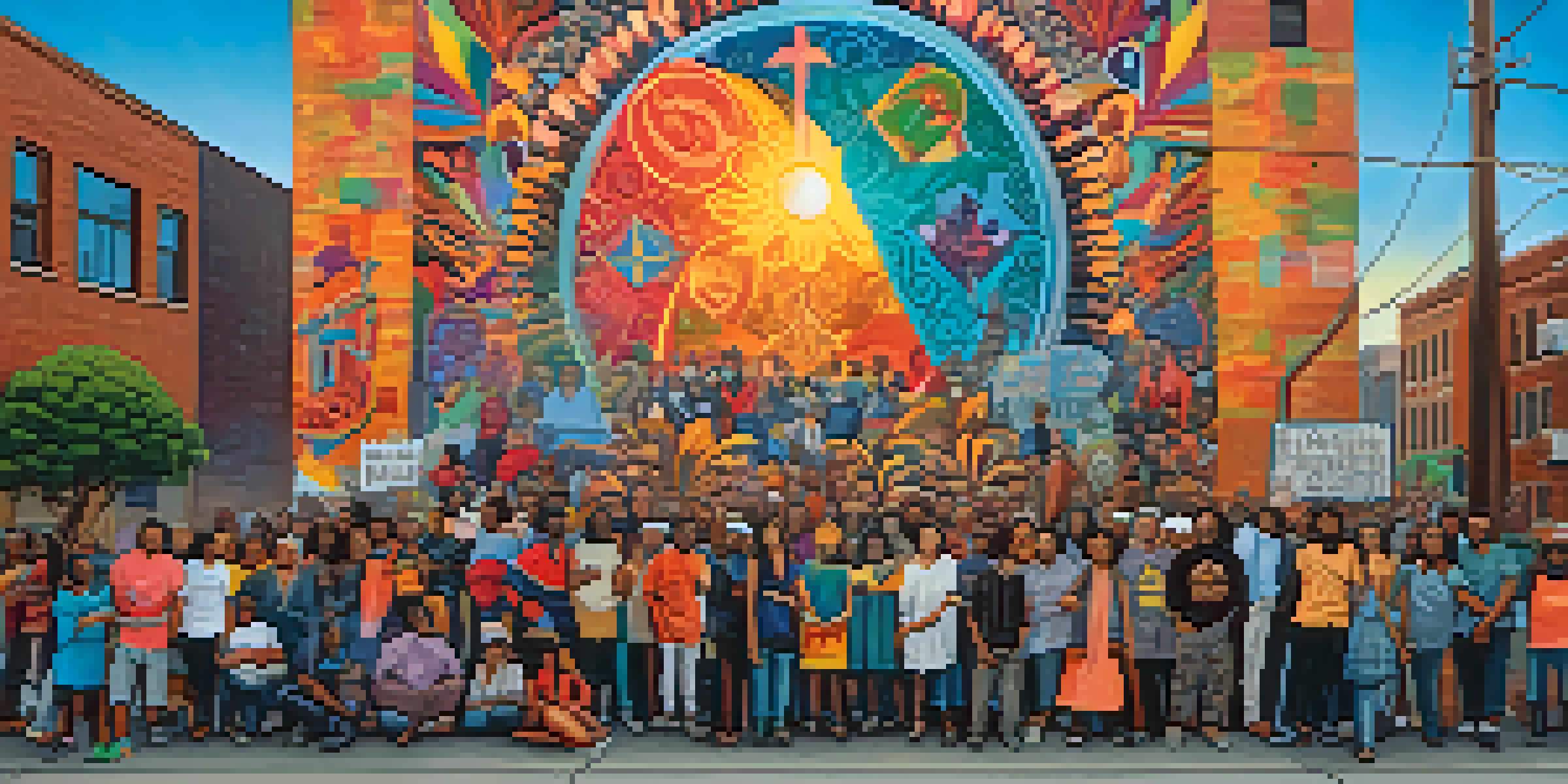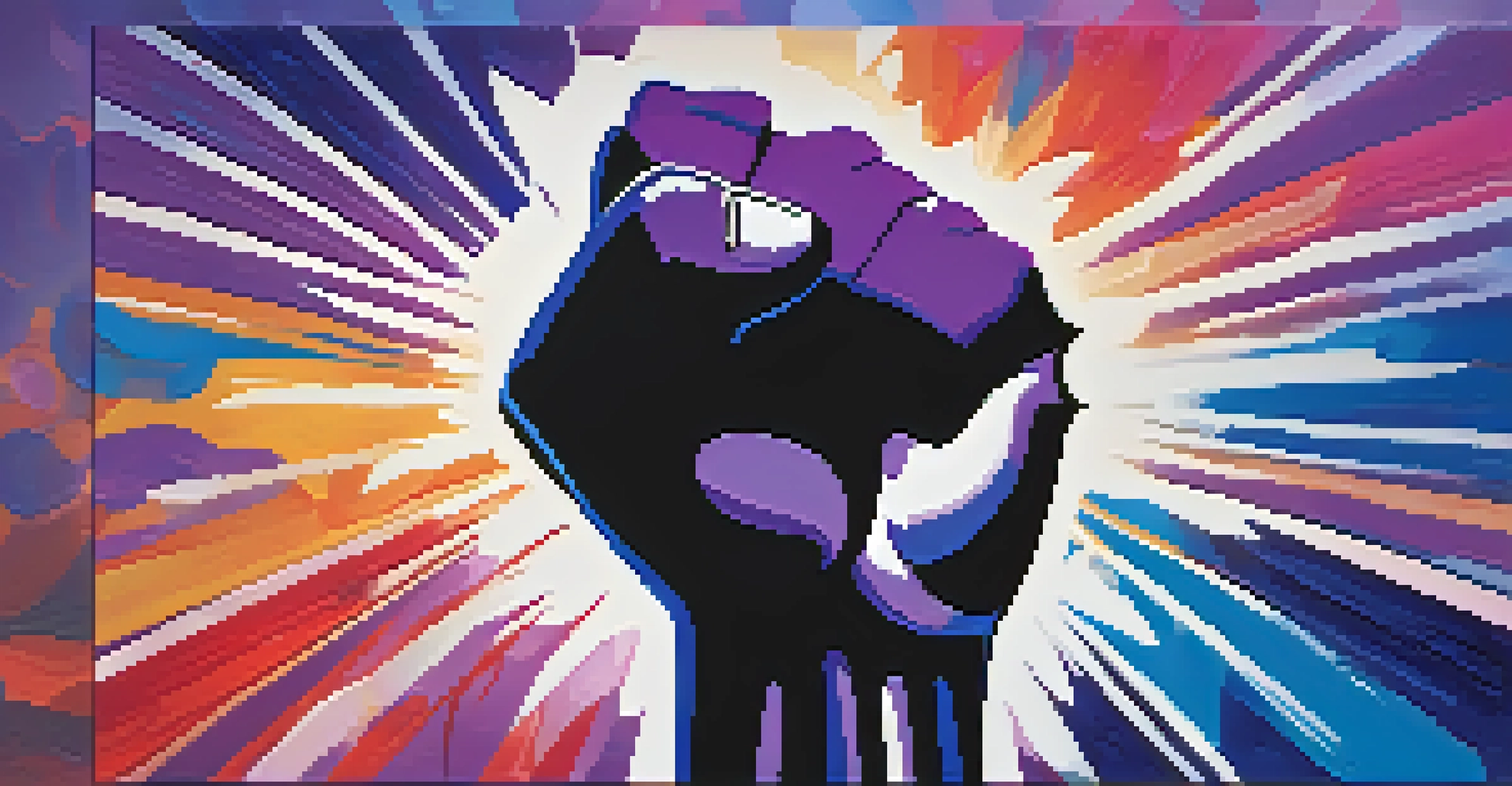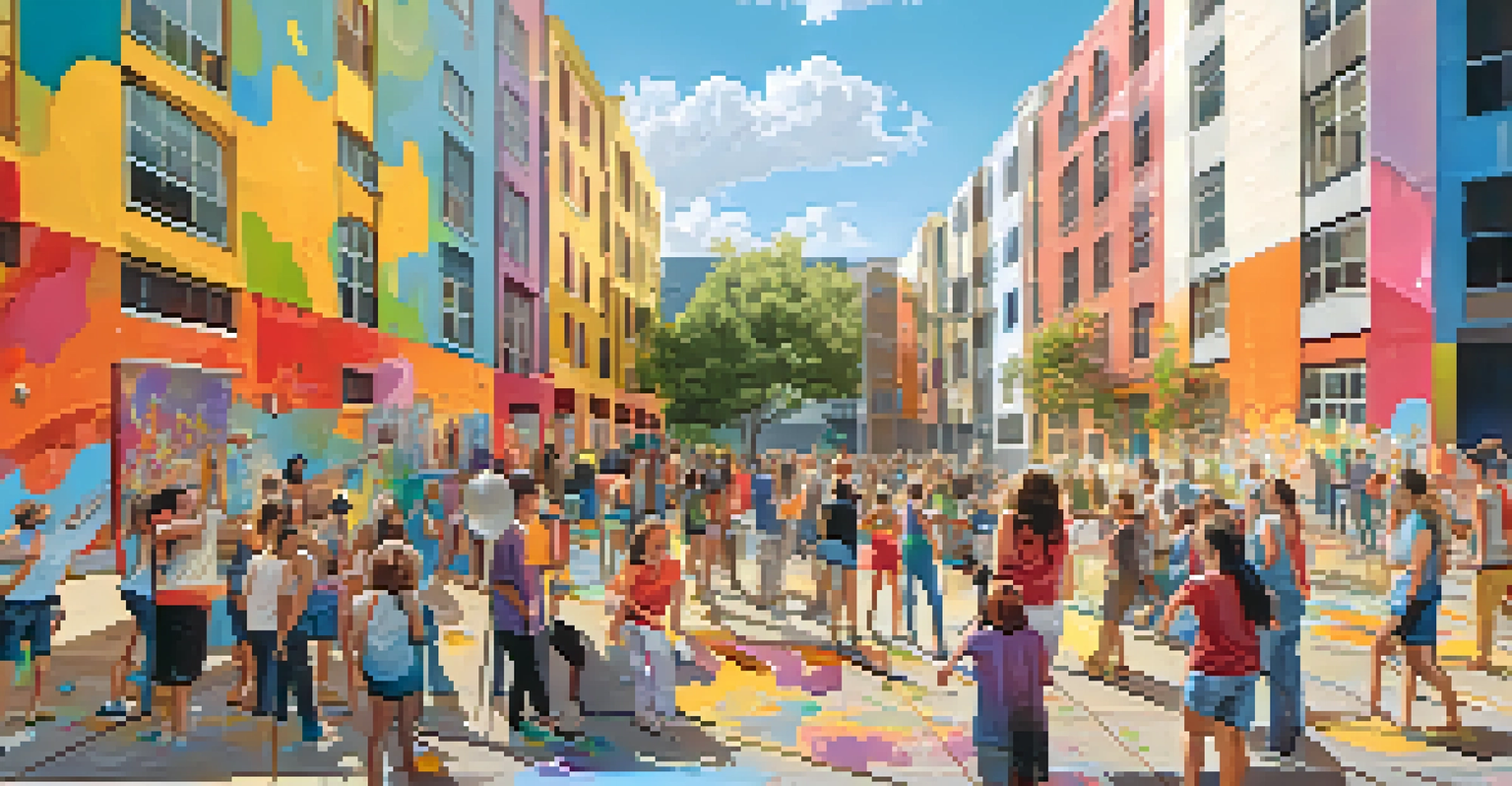Exploring How Art Reflects Social Justice Movements Today

The Intersection of Art and Activism in Today's Society
Art has long been a powerful tool for social change, acting as a mirror to society's struggles. Today, artists leverage their creativity to address pressing social justice issues, from racial inequality to climate change. By engaging with current events, they create pieces that resonate with audiences, encouraging reflection and dialogue.
Art is a powerful catalyst for social change.
For instance, street art has emerged as a significant medium in this movement. Artists like Banksy have utilized public spaces to comment on societal issues, making their messages accessible to all. This accessibility is crucial; it allows people from various backgrounds to engage with complex topics in a relatable way.
Related Resource
Moreover, art often transcends language and cultural barriers, making it a universal means of communication. As art continues to evolve, its role in activism only grows stronger, demonstrating that creativity can ignite change and inspire action.
Visual Art as a Catalyst for Social Change
Visual art, whether through paintings, installations, or murals, plays a vital role in social justice movements. Artists use their platforms to raise awareness and provoke thought, turning their work into a call for action. For example, the powerful images in the Black Lives Matter murals illustrate the urgency of the fight against racial injustice.

These artworks invite viewers to confront uncomfortable truths about society. They serve as reminders of the ongoing struggles that marginalized communities face, fostering empathy and understanding. This emotional connection can be a catalyst for change, motivating individuals to join the cause.
Art as a Tool for Social Change
Artists today use their creativity to address social justice issues, encouraging reflection and dialogue through various forms of art.
Additionally, art exhibitions focused on social issues can attract diverse audiences, sparking conversations that might not happen in traditional settings. By creating spaces for dialogue, visual art fosters community engagement and encourages collective efforts toward social justice.
The Role of Performance Art in Advocacy
Performance art uniquely engages audiences by combining elements of theater, dance, and activism. Artists often use their bodies as instruments of expression, conveying messages that resonate on a personal level. This form of art can be particularly impactful in addressing issues like gender equality and LGBTQ+ rights.
The role of the artist is to make the revolution irresistible.
Take the work of artists like Marina Abramović, whose performances challenge societal norms and provoke critical thought. By placing themselves in vulnerable positions, they invite viewers to reconsider their own beliefs and assumptions. This interactive nature of performance art can leave a lasting impression on audiences.
Related Resource
Moreover, performance art can be a powerful way to commemorate movements and events. By re-enacting significant moments in history, artists keep the spirit of activism alive, inspiring new generations to continue the fight for justice.
Street Art: A Voice for the Voiceless
Street art has become synonymous with social justice, acting as a voice for those often unheard. Artists take to the streets to create murals and graffiti that speak to issues like police brutality, immigration, and poverty. This form of expression not only beautifies public spaces but also sparks crucial conversations.
The global phenomenon of street art exemplifies how local issues can gain international attention. For example, the iconic murals in cities like Berlin and São Paulo address both local struggles and universal themes of injustice. By doing so, they create a sense of solidarity among diverse communities.
Community Engagement through Art
Collaborative art projects invite diverse voices to create together, fostering unity and shared purpose while addressing social issues.
Furthermore, street art's ephemeral nature challenges the traditional art world. These pieces may be temporary, but their messages can endure, leaving a lasting impact on both the environment and its inhabitants.
Digital Art and Social Justice: The New Frontier
In our increasingly digital world, online platforms have become vital spaces for social justice art. Digital artists use social media to share their work, reaching global audiences instantly. This accessibility allows for diverse voices to be heard and celebrated in ways that traditional media may not accommodate.
For example, powerful digital campaigns like #MeToo have relied heavily on visual content to convey messages of empowerment and solidarity. Artists create graphics, illustrations, and animations that capture the essence of these movements, making complex issues more digestible for a broad audience.
Related Resource
Additionally, the rise of NFTs (non-fungible tokens) has opened new avenues for artists to monetize their work while supporting social causes. By selling digital art linked to charitable organizations, creators can leverage their influence and resources to effect change.
Literature: The Written Word as a Tool for Change
Literature, much like visual art, serves as a powerful vehicle for social justice advocacy. Authors and poets use their words to explore themes of injustice, inequality, and resilience, often drawing from personal experiences. Works like 'The Hate U Give' by Angie Thomas illustrate the complexities of race relations and police violence, resonating with readers worldwide.
Through storytelling, literature fosters empathy by allowing readers to step into the shoes of others. This emotional connection can provoke thought and inspire action, encouraging individuals to engage with social issues on a deeper level. By sharing diverse narratives, writers help illuminate the struggles faced by marginalized communities.
Digital Platforms Amplifying Voices
The rise of digital art and social media allows artists to reach global audiences, making social justice messages more accessible and impactful.
Moreover, literary movements often coincide with broader social justice efforts. Book clubs and literary festivals focused on justice themes create communities that promote discussion and activism, proving that the written word can be as impactful as any visual art.
Collaborative Art Projects: Building Communities for Change
Collaborative art projects have emerged as a dynamic way to engage communities in social justice efforts. These initiatives invite individuals from various backgrounds to contribute their voices, fostering a sense of unity and shared purpose. By working together, participants can create art that reflects their collective experiences and aspirations.
For instance, community murals often involve local residents in the design and painting processes. This engagement not only beautifies neighborhoods but also instills a sense of pride and ownership among residents. The resulting artwork often communicates powerful messages about identity, resilience, and hope.

Additionally, collaborative projects can serve as platforms for dialogue around difficult topics. By bringing people together to create, these initiatives encourage conversations that can lead to greater understanding and empathy, reinforcing the belief that art can be a powerful catalyst for social change.